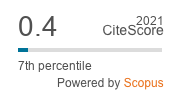Selection of best performing Apis cerana indica Fab. colonies for stock improvement based on comparison of economic characters
DOI:
https://doi.org/10.33307/entomon.v40i3.74Keywords:
Apis cerana indica, black morph, yellow morph, comparative performance, brood area, pollen storage area, honey yieldAbstract
The comparative performance on economic characters of Indian bee Apis cerana indica Fab. collected from 18 locations of different beekeeping pockets in Kerala were studied during 2012-2013 to find out better performing colonies for selective breeding. The bee colonies collected from highland location Rajakkat (L3) and Rosemala (L6) were black morph and midland location Pathanapuram (L11) and lowland location Kadakkal (L18) were yellow morph and bees from other locations were common brown bees. The black and yellow morphs of A. cerana indica are being reported from Kerala for the first time. The black and yellow bee colonies recorded significantly higher mean bee strength, brood area, pollen storage area, honey storage area and honey yield compared to common brown bees. Both black and yellow bee morphs had more tolerance/ immunity against diseases compared to common bees. Absconding behavior was more in black bees while it was not recorded in yellow bees. These black and yellow bee colonies can be utilized for stock improvement through selective breeding for enhanced honey production.
Downloads
Published
How to Cite
Issue
Section
License
Copyright (c) 2015 ENTOMON

This work is licensed under a Creative Commons Attribution-ShareAlike 4.0 International License.


